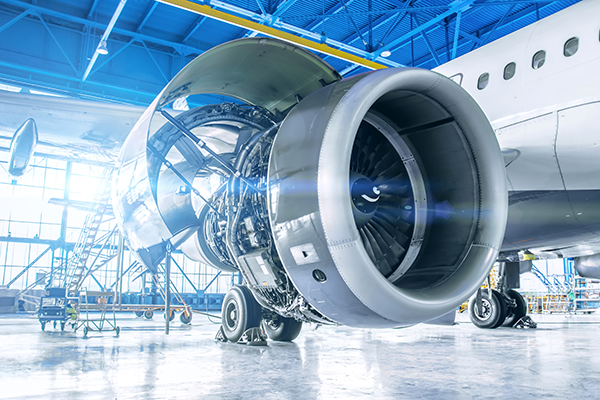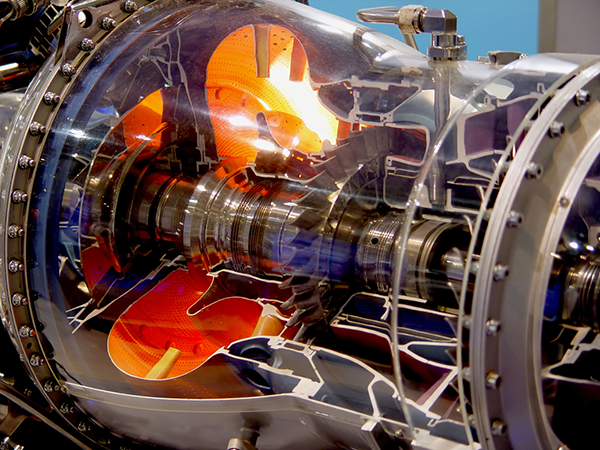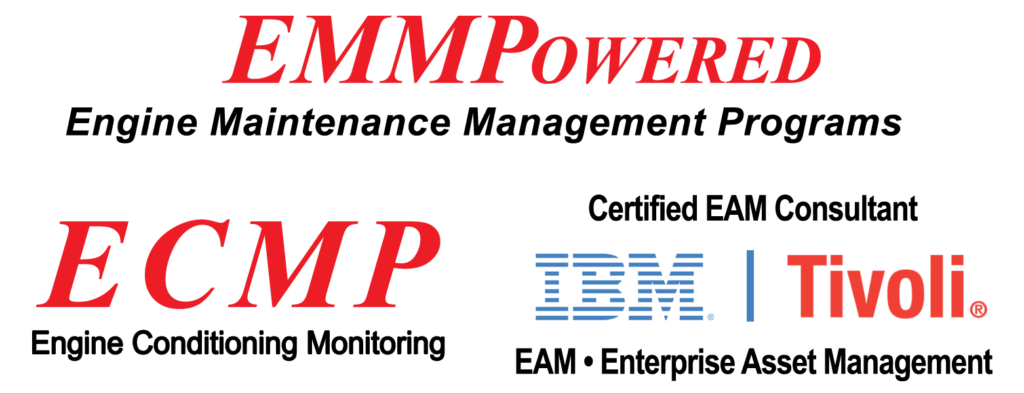EMMPowered Aircraft Engine Condition Monitoring Program (ECME)
Why our Aircraft Engine Condition Monitoring Program is Better
The EMMPowered Aircraft Engine Condition Monitoring Program (ECME) was initially developed from the procedures and formulas in Pratt & Whitney Letter NO. 18 and OI 200. Although they were Pratt & Whitney documents, they only provide the formulas used in correcting inflight parameters and the necessary procedures in developing gas path generator curves, which apply to ALL engine types.
The working knowledge necessary to analyze engine performance comes with years of experience, an understanding of the engine coefficients and how changes of the various gas path components effect the operation of the engine.

The ECME aircraft engine condition monitoring program was developed in 1994 with a Field Service Representative for Pratt & Whitney which required the trending and analysis to monitor IAE V2500 engines. IAE at that time was majority controlled by the combination of Pratt & Whitney and Rolls Royce.
Most Engine Condition Monitoring programs at the time based their assessments on EPR, which fluctuated wildly based on varying operating conditions. The resultant scatter in EPR based calculations had to be aggressively smoothed to remove saw tooth patterns in any trending analysis. This aggressive smoothing minimized any shift in trending paramaters which masked the story that the engines were trying to tell. Most engine manufacturers have evolved away from an EPR based methodology over the last 30 years. Various contractors adopted better methodoloigies before the engine manufacturers did. Adhering to old and outdated methodologies would be, and is, counterproductive.
ECME was one of the first to base engine performance trending on N1 speed, long before the rest of the aviation industry which was slow to adopt it. The initial trending analysis was a paperwork system which plotted trends using pencil and graph paper. This paperwork methodology system was automated and computerized and became the starting point for ECME.
Our Aircraft Condition Monitoring System is not Propriety to any Particular Airline
Engine manufacturers have a vested interest in maintaining their propietary revenue generating fiefdoms. Each engine manufacturer has developed their own software programs for Engine Condition Monitoring. I understand why they do it, but what is not propietary is math.
The math for calculating OAT, N1 – N2- N3 speeds, Hot Day Limits, WF adjustments for Altitude and Mach, etc. are standardized throughout the industry. The formulas for adjusting engine parameters to Standard Day conditions does not vary between different engine manufacturers.
Our ECME program is standardized across the engine manufacturers spectrum. We can analyze any engine type, regardless of the manufacturer, using ECME.

Our customers do not have to implement multiple software platforms for the differing types of aircraft engines in their fleets. Every engine type can be analyzed and trended, with similar standardized outputs. The main objective of the ECME aircraft engine condition monitoring program is safety and reliability. This is achieved by early detection and repair of engine problems before advanced gas path deterioration results in premature engine failure.
Trending Engine Parameters with the ECME Aircraft Engine Conditioning Monitoring System
ECME uses inflight engine parameters to develop trends and monitors these trends for deviations that indicate any problems that may exist. This analysis of deviations provides early warning signs and enables action to be taken before failure occurs. The whole process is a proactive approach in maintaining healthy jet engines and is an essential part of a reliability and/or a preventive maintenance program.
When trending engine parameters a series of calculations are used to correct the recorded inflight data. This corrected data is then matched against an average engine model family curve. The delta between the corrected data and the family curve is then plotted in a linear flight sequence.
The parameters of all gas turbine engines follow gas generator curves. When the flight parameters are corrected and plotted they develop what is known as the engine signature. The engine signature is as unique to an engine as your signature is to you. No two engines are exactly alike and the difference in the trends are related to the differences in the gas path. These differences can be the result of build tolerances, deterioration/contamination and modification standards. Once a trend has been established, changes or shifts in these trends can indicate: Recording Errors, Indicating System Malfunctions or Gas Path related distress.
When an engine is first entered into the ECME program the initial 52 data points define the baseline for that engine. This initial trend is plotted as a solid red line. The last 52 data points appear as a dotted black line. Plotting the data in this way enables the analyst to not only monitor for adverse trend shifts, but to also monitor engine deterioration over time.
When ECME developed our trending charts, the charts generated by different engine manufacturers exclusive propietary Engine Condition Monitoring Programs were reviewed. Most were pretty, but very confusing, data clustered around parameters in a squirrely pattern that did not represent anything in a linear fashion over time. Making an engine health analysis from these types of charts is difficult to do. ECME charts are much more informative and explanatory by presenting the engine’s gas path health and performance in a linear fashion over time.
EMMPowered has been providing Aircraft Engine Condition Monitoring services for over a hundred clients and thousands of engines with flights to and from virtually every country in the world for 30 years. We have gained a world wide reputation for Engine Condition Monitoring that has been accepted and proven across demanding customers and aviation authorities.
Our dedication to our customers and the monthly reports and alerts we provide have been analyzed and validated by: internal reviews of our clients, Maintenance Repair and Overhaul facilities, civil aviation authorities, CAS meetings, etc.

